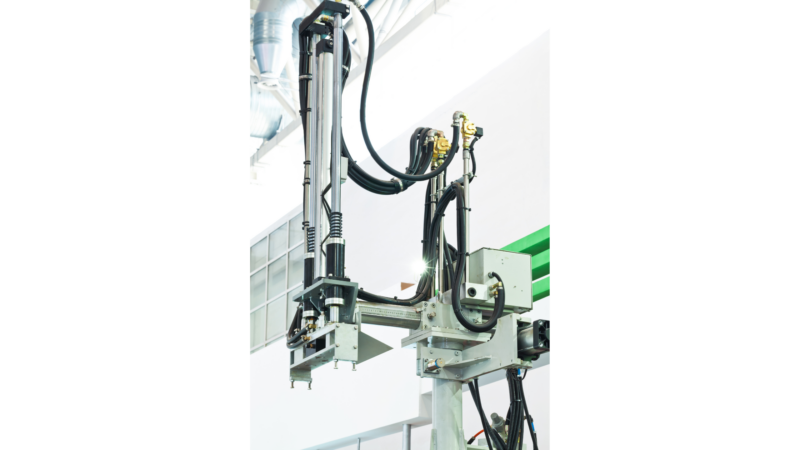Die Casting: Precise Metal Creations
In the world of metal manufacturing, several casting methods serve different industries and design needs. One of the most commonly recognized techniques for high-volume, high-precision parts is die casting—a process that uses reusable steel molds and high-pressure injection to form detailed metal components.
Die casting plays a major role in the production of parts for automotive, aerospace, electronics, and consumer goods, particularly where thin walls, tight tolerances, and smooth finishes are required. But while it offers certain advantages for specific applications, it’s not a one-size-fits-all solution.
At Quaker City Castings, we specialize in no-bake sand casting, a process designed for flexibility, larger part sizes, and custom low-to-medium volume production. In this blog, we’ll take a closer look at the die casting process, its strengths, how it works, and where it fits in the broader casting landscape, while highlighting how it compares to other foundry methods like no-bake sand casting.
Whether you’re a design engineer or a curious customer, understanding the difference between casting methods is key to choosing the right process for your project.
What is Die Casting?
Die casting is a manufacturing process that involves injecting molten metal, typically non-ferrous alloys like aluminum or zinc, into a steel mold (die) under high pressure. These dies are precision-machined and hardened, allowing for tight tolerances and a smooth surface finish. As the metal cools and solidifies inside the cavity, it takes on the shape of the mold with impressive consistency.
There are two main types of die casting machines:
-
Hot-chamber machines are used for low-melting-point metals like zinc, offering faster cycle times.
-
Cold-chamber machines are used for metals like aluminum, which require separate melting and ladling into the injection chamber.
Because the tooling is permanent and the process is highly automated, die casting is ideal for producing high volumes of small to medium-sized parts with fine detail. It’s commonly used in the automotive, electronics, and appliance industries.
That said, die casting is less suited for larger castings, short production runs, or parts that require high-temperature alloys. In those cases, flexible processes like no-bake sand casting, which uses disposable molds and allows for more complex shapes, larger sizes, and a wider range of metals—offer better solutions.
The Casting Process
The die casting process consists of several controlled steps designed to produce highly accurate metal parts, especially in high-volume production settings. It begins with the preparation of the die, a mold typically made from hardened steel or cast iron. These molds are precision-machined to form the cavity that shapes the part and are engineered to withstand the extreme temperatures and pressures involved in the process.
Once the mold is prepped and coated with a release agent, the selected non-ferrous alloy is melted in a furnace to a precise temperature. The molten metal is then transferred to the die casting machine, where it is injected into the mold cavity under high pressure. This pressure helps force the metal into every detail of the mold and promotes rapid solidification.
After cooling, the mold is opened and the part is ejected. Any excess material (flash) is trimmed, and the casting is inspected for defects. Additional operations, like machining, polishing, or coating, may be required to meet final specifications.
This description applies specifically to high-pressure die casting, which is the most common variant due to its speed and precision. However, other forms, such as low-pressure die casting and gravity die casting, are also used in certain applications. These alternatives are generally slower but can be more suitable for thicker parts or different alloy requirements.
It’s worth noting that while die casting excels at producing high volumes of small-to-medium parts, it’s not the most efficient or cost-effective method for larger castings, custom geometries, or short runs.
The Advantages of Die Casting
Die casting provides several clear advantages, especially in high-volume production environments. One of its primary strengths is the ability to create complex, highly detailed shapes with excellent dimensional accuracy and repeatability. Because the molds (dies) are precision-machined, each part is nearly identical to the next, which often reduces the need for secondary machining or finishing.
Another benefit is speed. High-pressure injection and fast solidification mean that parts can be produced quickly, making die casting very cost-effective for large production runs. Shorter cycle times also contribute to faster turnaround for industries that rely on mass-produced components, such as automotive, consumer electronics, and appliances.
When compared to other metalworking techniques like forging or stamping, die casting often achieves better surface finishes and tighter tolerances, especially on small, intricate parts.
However, these benefits come with trade-offs. Tooling for die casting is expensive and time-consuming to create, which can make it less practical for short runs, larger castings, or components that may change frequently in design. Additionally, die casting is typically limited to non-ferrous alloys like aluminum, magnesium, and zinc.
In contrast, no-bake sand casting—the process we specialize in at Quaker City Castings—offers more flexibility for larger, more complex components, a wider range of metal alloys (including ferrous metals), and lower upfront tooling costs. That makes it ideal for custom parts, low-to-medium volumes, or designs that require modifications over time.
Equipment and Machinery

Die casting relies on specialized equipment and precise controls to produce high-quality metal components at scale. At the heart of the process is the die casting machine, which typically includes two primary systems:
-
The injection unit, which delivers molten metal into the mold at high pressure.
-
The clamping unit, which securely holds the mold (die) closed during the injection and solidification phases.
Supporting equipment includes:
-
A furnace to melt non-ferrous alloys like aluminum or zinc to the correct temperature.
-
A custom-machined mold, or die, usually made from high-strength tool steel or carbide.
-
Trimming tools that remove flash and refine the final shape of the part after it’s ejected from the mold.
Because of the high speed and pressure involved, quality control is essential. Manufacturers use methods such as dimensional inspections, visual checks, X-ray testing, and other non-destructive techniques to ensure each part meets strict performance and reliability standards.
While this setup is ideal for mass production of small, repeatable parts, it requires significant upfront investment in tooling and equipment. In contrast, no-bake sand casting uses single-use sand molds, offering greater flexibility for larger parts, complex shapes, and shorter runs—often without sacrificing quality. Sand casting operations like those at Quaker City Castings also emphasize rigorous quality control, with testing procedures tailored to low-to-medium volume, high-integrity castings used in demanding industrial applications.
Applications Across Industries
Die casting’s precision and repeatability make it a go-to manufacturing method across a wide range of industries. In the automotive sector, it’s commonly used to produce lightweight yet strong parts such as engine components, transmission housings, and structural supports—where high-volume production and tight tolerances are essential.
In aerospace, die casting contributes to components like turbine housings and brackets, where performance, reliability, and weight reduction are key. The electronics and consumer goods industries also rely on die casting to manufacture enclosures, frames, and hardware with sleek finishes and accurate dimensions.
Thanks to ongoing innovations in materials and automation, die casting continues to evolve. Improvements in tooling, alloy development, and machine controls are enhancing speed, precision, and sustainability—solidifying its place in the future of mass production.
However, it’s important to note that not all applications are a perfect fit for die casting. The process favors high volumes of small-to-medium-sized parts made from non-ferrous metals. When it comes to larger components, complex geometries, or low-to-medium production runs—especially in iron, steel, or nickel alloys—no-bake sand casting remains the preferred method.
At Quaker City Castings, we help customers select the right casting process based on their specific needs—whether that’s the high-volume efficiency of die casting or the flexibility and strength of no-bake sand casting. Our focus is on delivering durable, high-integrity castings that perform in the most demanding applications.
The Future of Die Casting
Die casting is a remarkable example of how technology and precision engineering can come together to produce detailed, high-quality metal parts—especially in high-volume manufacturing. Its evolution from a niche process to a widespread industrial solution speaks to its effectiveness in delivering consistent, reliable results across industries like automotive, aerospace, and electronics.
That said, no single casting method is universally superior. While die casting shines in areas that demand speed, uniformity, and lightweight design, other applications—such as large, custom, or low-volume parts made from ferrous alloys—require the adaptability and strength of processes like no-bake sand casting.
At Quaker City Castings, we recognize the value of all casting technologies—and we’re proud to specialize in a method that provides unmatched flexibility, material options, and long-lasting durability for heavy-duty components. Whether you’re designing a precision aerospace bracket or a large industrial housing, understanding the right process for your project is key to long-term performance and cost efficiency.


Leave A Comment